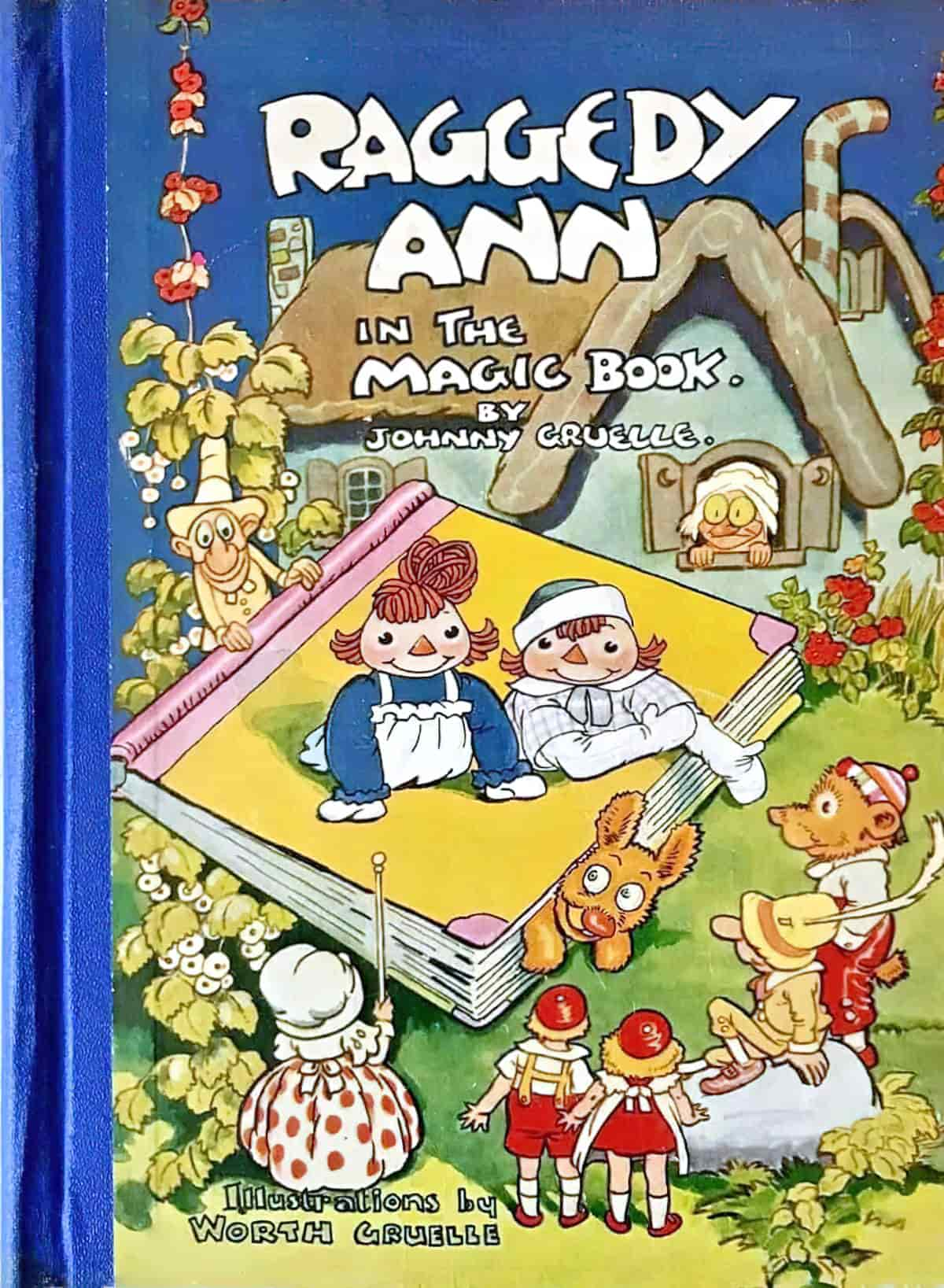“Storybook” as adjective is applied to various places and objects. English has recently borrowed the Scandinavian concept of “hygge” to mean something similar.
We might also use the word holotypic (from the noun holotype) when talking about something which stands in for ‘the accepted, archetypal version’ of an object or idea. It actually comes from botany, but I’m borrowing it for picture books.

People who are good at Pictionary aren’t necessarily the best at drawing — instead they tend to understand the difference between a holotypic depiction versus an idiosyncratic one.
The holotypic car has four wheels, so when Mr Bean drives a three-wheeled reliant regal, this is seen as a quirk.
In picture books, the holotypic house has a pitched roof and is surrounded by garden. The picture book house is basically The Dream House. Any departure from the dream house draws attention to that aspect.
As much as I like ‘holotypic’, ‘storybook’ is a more widely accepted term.
What does it mean to be a ‘storybook [X]’?
In her novel We Were The Mulvaneys, Joyce Carol Oates describes High Point Farm:
The gravel drive is lined with tall aging spruces. Around the house are five enormous oaks and I mean enormous—the tallest is easily three times the height of the house and the house is three storeys. In summer everything is overgrown, you have to stare up the drive to see the house—what a house! In winter, the lavender house seems to float in midair, buoyant and magical as a house in a child’s storybook. And that antique slight in the front yard, looking as if the horse had just trotted away to leave the lone passenger behind—a human figure, a tenderly comical scarecrow wearing old clothes of Dad’s.
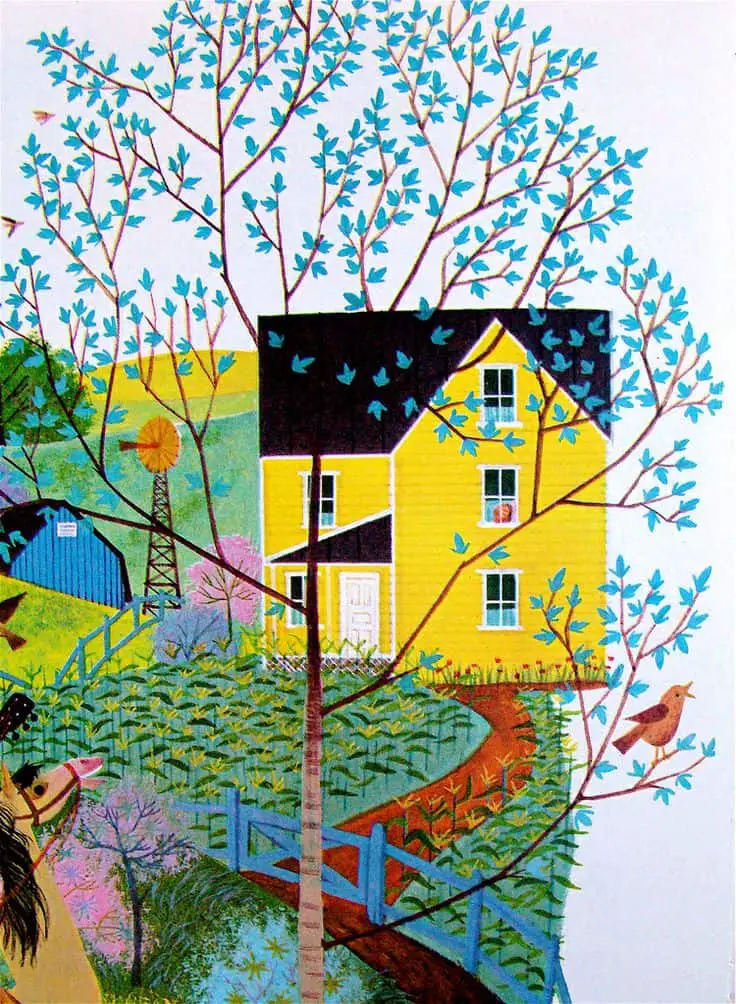
If you’re an artist and you ever sit down to illustrate a picture book, even if you’ve not considered this question before, it may come up as you illustrate: How much of your illustration is going to be ‘storybook’? Which parts of the illustration will draw attention to themselves by not being classically ‘storybook’?
The Storybook Bedroom
For there are certain ‘storybook’ ways of depicting certain objects. The interior of a child’s bedroom will have a single bed, elevated on four legs (or perhaps bunks, perhaps twin beds); curtains on the window rather than vertical blinds, a few toys scattered artfully around (likely some books). A futon in a Western storybook, or a foldout sofa, will draw attention to itself. A child’s house will basically be clean, with no peeling wallpaper, or maybe a few crayon marks, but rarely evidence of where a parent tried to scrub off two-year-old artwork and didn’t quite manage it. Storybook homes are not mobile homes. They are most typically found in leafy suburbs.
The Storybook Bedroom is the middle-class, Western bedroom.
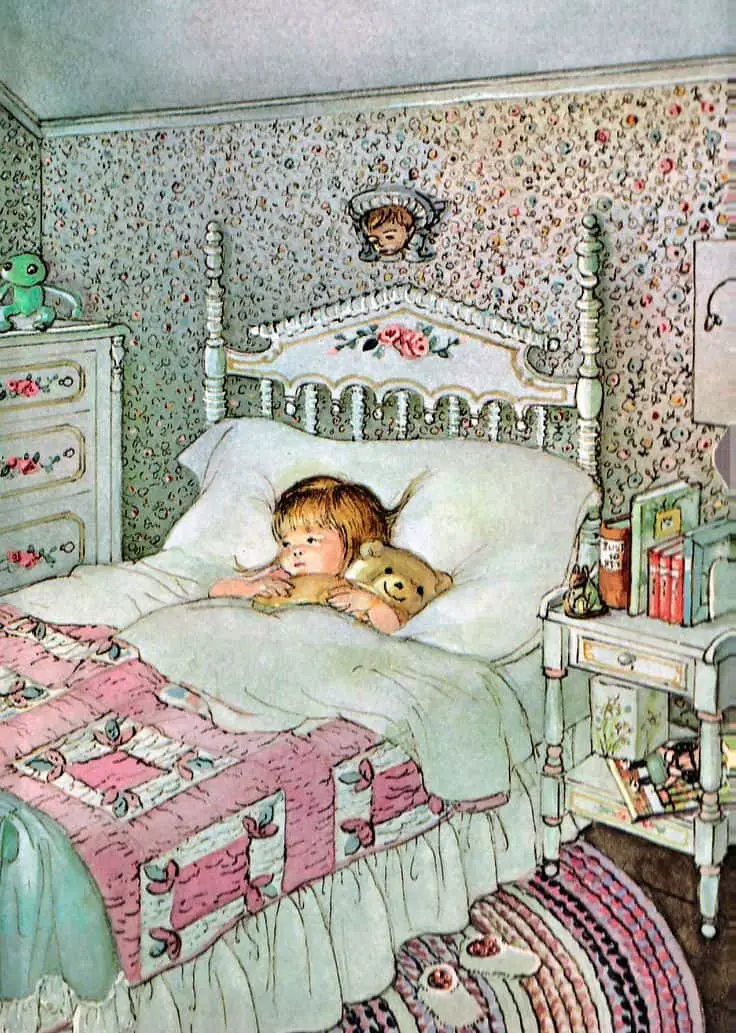
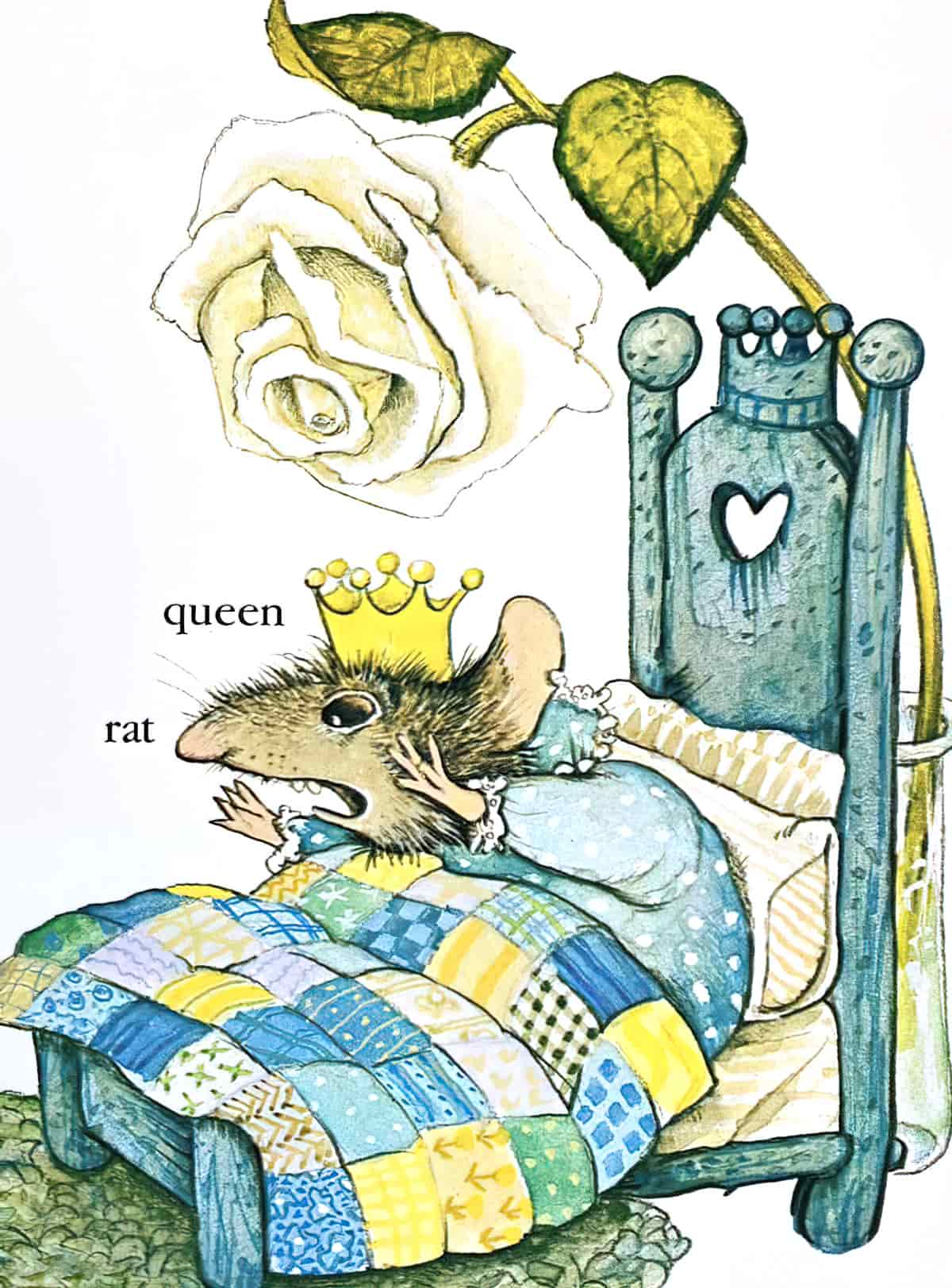
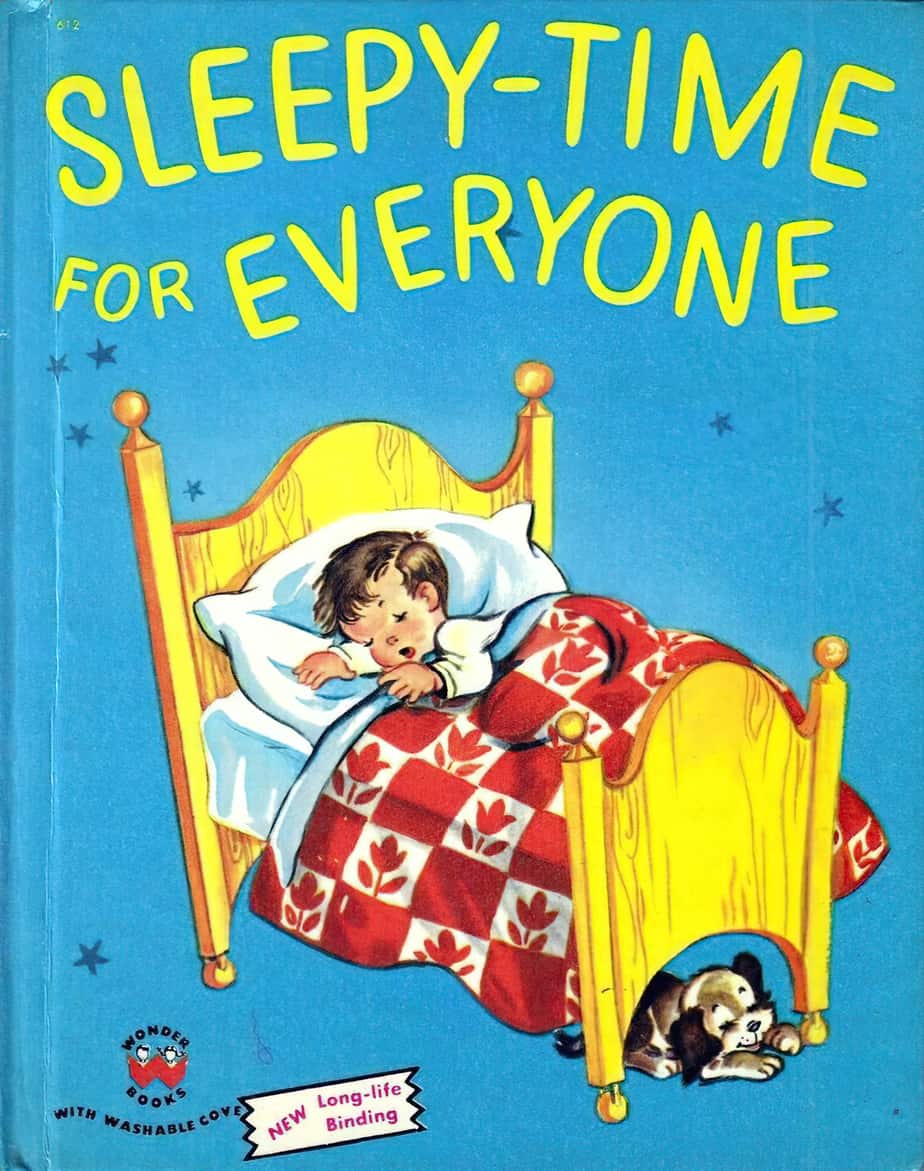
Storybook Cars
Parents will drive sensible family cars like station wagons (not convertibles fitted out with child booster seats). Towns will comprise everyone’s idea of perfect capitalism: a grocer’s, a butcher’s, a bakery, rather than the more likely alternative of Walmarts in America and The Warehouse in New Zealand…
Storybook Daily Routines
Fathers go out to work in the morning rather than at night. They wear button down shirts and carry briefcases. Families eat breakfast together.
These are not rules, of course. These are simply the storybook conventions which don’t draw attention to themselves. Except when they do. Like when more and more readers become dissatisfied with the fact that this storybook world we imagine is in fact a white, middle-class world, which seems to have the 1950s era as an ideal, even when modernity is also apparent.
Storybook Towns
Manchester-by-the-sea provides (some of) the filming location for a sad adult film Manchester By The Sea. The juxtaposition between the depressing storyline and the beautiful scenery stands out to make our main character seem even sadder.
What does it take to achieve Storybook Town status?
- A clear delineation between seasons, with red leaves in autumn, snow in winter
- Curved, narrow, tree-lined roads which meander rather than grid
- A slightly hilly terrain
- Near the sea
- Where there are boats
- Brightly coloured weatherboard or brick two-storied houses, with crisp white trim
- Low stone walls for fences
- A variety of greens in the foliage
- Bright blue skies at certain times of the year
- Coves, harbours and creeks
- Place names with clear Anglo meanings like Cathedral Pines, Cornerstone Church and Central Pond.
Storybook Charm
If you do a Google image search for “storybook charm” you get
- houses with high, gabled roofs, dormer windows and established English gardens
- lit up from the inside
- windows with drapery
- quilts
- rose bushes
- log cabins in the woods
- certain types of architecture such as exposed timber interiors and arched interior doorways
- views from the tops of mountains into secluded valleys sheltering cosy little towns
- outdoor seating with cushions brought out from inside for the occasion
- falling down little sheds at the bottoms of gardens
- interesting stairways
- different patterns brought together but still in a matching kind of way, much like a kimono ensemble
- manicured lawns
- paths leading to front doors, often curved
- canopy beds
- treasures hidden in chests
- lamps on stands
